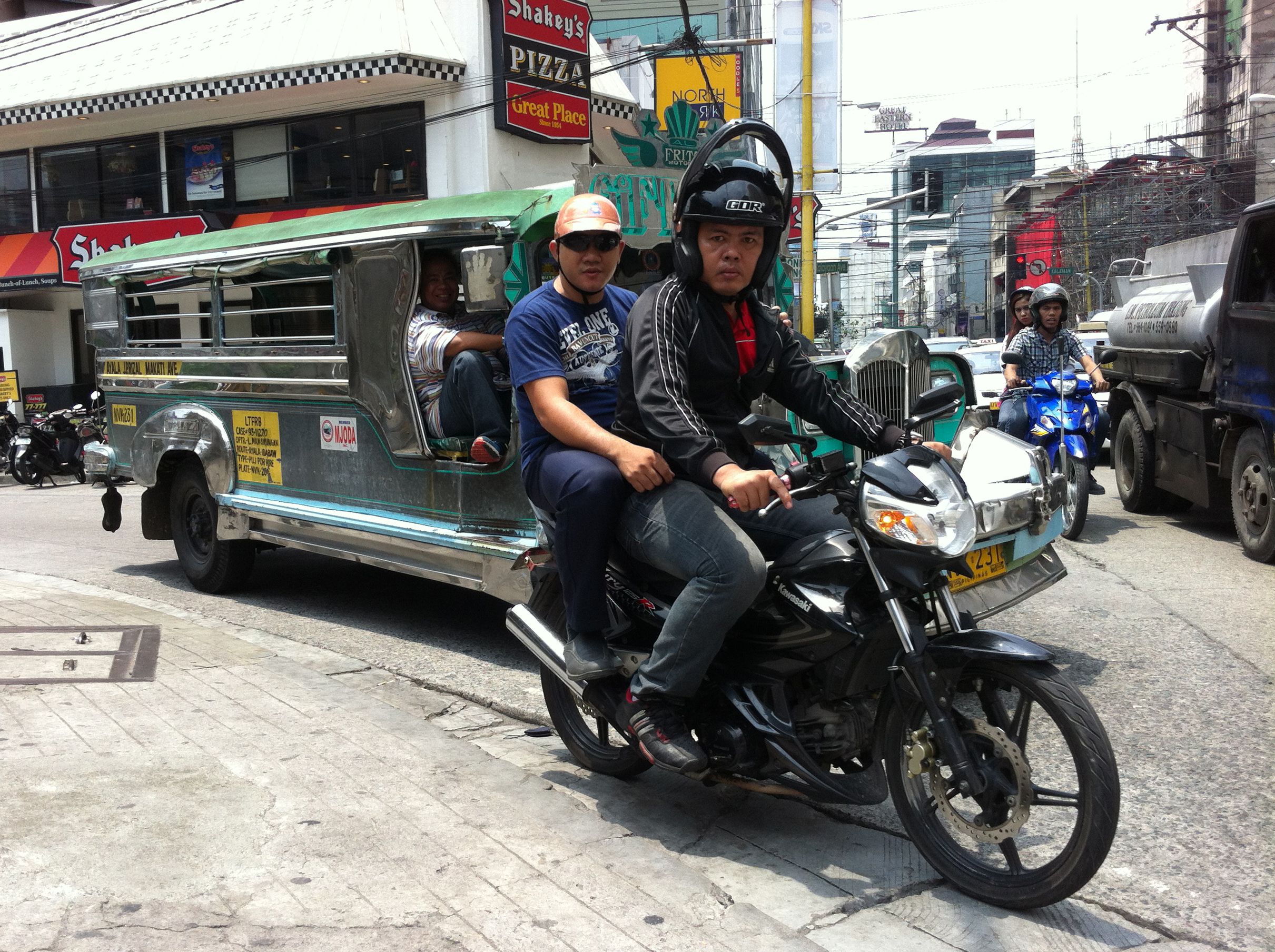MANILA—Philippine President Benigno Aquino III was late for the ribbon-cutting ceremony at a new research laboratory in the capital, and when he finally arrived, he offered a familiar excuse.
“It’s Friday and it’s traffic,” he told the audience.
But unlike other harried motorists in this sprawling metropolis that often seems to be teetering on the brink of terminal gridlock, Aquino could at least ring up the head of the Metro Manila Development Authority, which oversees the city’s road infrastructure, and vent his frustration.
According to local newspapers, a “peeved” Aquino phoned Metro Manila boss Francis Tolentino and suggested that he direct traffic himself. Tolentino was attending a conference in Singapore on the day the president phoned, but in response to an e-mailed query from the Pulitzer Center, he promptly replied with an impressively detailed 8-page memo on some of the steps his department is taking to ease congestion and improve safety.
Topping the list is implementation of a 60 kph speed limit on Commonwealth Avenue, a multi-lane main thoroughfare commonly referred to as the “Highway of Death.” There are also plans to establish school zones with clearly marked zebra crossings at some 200 public schools in the city and to earmark money for expanding Manila’s meager light rail commuter lines.
Eleven new pedestrian footbridges over main arteries are in the planning stage. Tolentino also promised “intensified” enforcement of anti-jaywalking ordinances. Violators will be fined 200 pesos (about $4.60) and ordered to attend a 30-minute seminar on the dangers of jaywalking.
To make life a bit safer for the city’s swarms of motorcyclists, local authorities recently established separate lanes for two-wheelers on the main expressways, but as Jeff Miller, a transport specialist with the Asian Development Bank here, observed, “I seem to be the only one aware of it.”
Lack of enforcement has long been a critical problem in Manila. The police are poorly trained, poorly paid and have a reputation for being open to accepting a small payment to resolve any issue.
“The police don’t stop anybody for moving violations,” said Miller. “What are the consequences for running a red light? Almost none. You might get a fine, you might have to pay off a cop, but it’s not like you’re going to lose your license.”
Former Manila Mayor Jose “Lito” Atienza, most famous for his tireless efforts to ban the distribution of contraceptives in the city, was less successful in his efforts to bring order to what he describes as “the anarchy” of Manila traffic.
“The traffic conditions in Manila are rooted in corruption—corruption on the streets and corruption in city hall,” he told me. He went on to describe in lurid detail the so-called “collection”—a pyramid of petty bribes and payoffs that he says infects the police department from top to bottom.
“I wouldn’t say I totally corrected it, but it got better,” said Atienza, now a representative in congress, adding that police corruption has returned to previous levels.
“The police stop law-abiding people every day. It happens to me every day—they pull me over and when they recognize me, they apologize,” he said.
Drunk driving is another serious problem throughout the Philippines. Part of the problem is the laughably low official figure—1.4 percent—for road fatalities linked to alcohol (20 to 30 percent would be a more realistic figure, experts say). Drunk driving is theoretically illegal in the Philippines, but laws here were never linked to blood alcohol content levels, and in the World Health Organization’s 2013 road safety study, the Philippines earned a zero on a scale of 0-10 for enforcement of drunk driving laws.
In May 2013, President Aquino signed a new drunk driving law that imposes stiff penalties on violators and requires police to administer a breathalyzer test to anyone involved in a crash. But breathalyzers are scarce in the Philippines and the law does not establish a legal blood alcohol content level for intoxication—leaving that to the judgment of the police. Critics of the law see it as a golden opportunity for police to collect bribes.
The hazards of driving or even walking the streets of Manila are multiplied by the sheer diversity of vehicles that one must dodge. In addition to cars, swarms of motorcycles, trucks large and small, buses, taxis and bicycles, there are motorized rickshaws, pedal-powered rickshaws, pushcarts, motorcycles with homemade sidecars that sometimes carry half a dozen or more passengers, habal-habals (motorcycles modified so that three or four passengers can sit astride behind the driver), and kuligligs, motorcycles transformed into small delivery trucks and named in the local language after the sound a cricket makes.
Then, of course, there are the jeepneys, the national vehicle and the most popular mode of public transport. The originals were made from leftover U.S. Army jeeps. Newer versions, with their shiny sheet metal sides and flamboyant decoration, can carry up to two dozen passengers. Thousands of these vehicles, independently owned and mostly unregulated, ply the streets of Manila.
Taxis pose another problem. Most drivers rent their vehicles from fleet owners on a daily basis. To maximize earnings, they tend to work for 24 hours straight. The workday usually starts at 4 a.m., so if you hail a cab after midnight, you can be fairly certain that your driver has been battling Manila’s daunting traffic and his own exhaustion for the last 20 hours.
Traffic congestion in the Philippine capital consistently ranks among the worst in the world. It can take hours to go a few miles. Even if you are riding in a presidential motorcade, you are not immune.
